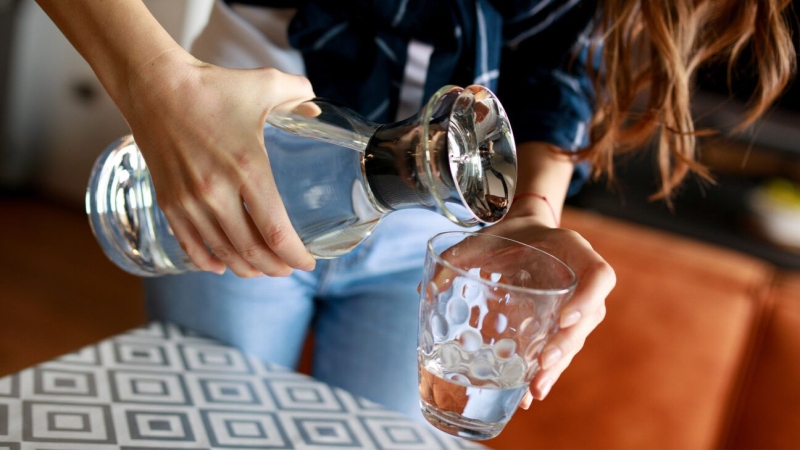- Prescription medication naltrexone is used to treat alcohol use disorder and opioid use disorder.
- The drug works by reducing cravings and the “buzz” associated with the use of alcohol.
- Naltrexone can help people cut back on how much alcohol they drink but is best used alongside behavioral and psychosocial support programs.
A pill that costs less than a dollar has been called the “Ozempic for drinking” after helping people cut back on how much alcohol they consume.
This prescription medication, known as naltrexone, is used to treat alcohol use disorder and opioid use disorder by reducing cravings and feelings of euphoria associated with the use of alcohol or opioids.
Here’s what to know about naltrexone.
What is naltrexone?
Naltrexone is a prescription medication approved by the Food and Drug Administration to treat alcohol use disorder and opioid use disorder. Naltrexone can be prescribed by any health care practitioner licensed to prescribe medications.
“Of the medications that are available [to treat alcohol use disorder], naltrexone is the one with the most clinical research and evidence to support its safety and effectiveness,” said Keith Heinzerling, MD, addiction medicine specialist, and director of Pacific Neuroscience Institute’s Treatment & Research in Psychedelics Program at Providence Saint John’s Health Center in Santa Monica, Calif.
However, “naltrexone works best in combination with significant behavioral support, internal motivation by the patient and psychosocial support,” he told Healthline.
According to the National Institute on Alcohol Abuse and Alcoholism, alcohol use disorder is a “medical condition characterized by an impaired ability to stop or control alcohol use despite adverse social, occupational or health consequences.” Alcohol use disorder can range from mild or moderate to severe or even life threatening, said Heinzerling.
Treatment with naltrexone lasts three to four months. For alcohol use disorder, it is available in pill form or as an extended-release injection, which is given every four weeks.
How naltrexone works
Naltrexone works by binding to opioid receptors in the body. This “helps decrease cravings for alcohol,” which helps them consume less alcohol, said Natalie Klag, MD, assistant professor of psychiatry in the Department of Psychiatry & Behavioral Health at The Ohio State University Wexner Medical Center and College of Medicine.
It “also makes it easier to put the brakes on and stop drinking if there is a return to use,” she told Healthline.
Some people take naltrexone regularly to abstain from alcohol use.
Others take it in pill form an hour before drinking alcohol to reduce the risk of alcohol overuse. This is known as the Sinclair Method. When done this way consistently over several months, a person may lose the desire to drink entirely.
Is naltrexone effective?
“Naltrexone is an incredibly safe and effective medication,” said Klag. However, “with any medications, but particularly for those used to treat any substance use disorder, the most important factor is working with a provider that you trust and who will work with you in a collaborative relationship.”
The World Health Organization recommends the use of naltrexone and acamprosate for the treatment of alcohol use disorder in adults.
Clinical studies from 2001 found that 78% of people who took naltrexone in pill form one hour before drinking were able to stop drinking altogether or drink very infrequently. This has helped people stay sober for longer periods.
In addition, “if people do return to drinking [while using naltrexone], they drink less, which can be important,” said Heinzerling, “because they might be more likely, if they have a slip-up and begin drinking, to be able to get back on track and not go into a full-blown relapse.”
Klag pointed out that naltrexone does not make you sick if you drink while taking it. “This means that if someone taking it has a return to [alcohol] use, it is helpful to continue taking naltrexone,” she said.
However, the effects of naltrexone can wear off after several hours. In addition, people who continue to drink after taking naltrexone can undo the protective effects of the medication. When that happens, people may feel the alcohol “buzz” again, which can lead to increased alcohol use.
In spite of the studies showing that naltrexone and other medications help people reduce or stop drinking, these drugs are not prescribed very often. In 2023, of the estimated 28.9 million people 12 years of age and older in the United States with alcohol-use disorder over the past year, only 554,000—or 1.9%—received medication-assisted treatment.
Heinzerling recommends that people who are looking for help to stop drinking or reduce their overall intake consider naltrexone as part of a comprehensive treatment approach.
“That should also involve counseling, psychological counseling, and behavioral support,” he said.
Support groups such as Alcoholics Anonymous and others can also help people stay sober.
“Self-help groups are not a professional treatment, but [they can] provide people with ongoing support and accountability,” said Heinzerling.
Naltrexone side effects
Common side effects of naltrexone may include:
- nausea
- sleepiness
- headache
- dizziness
- vomiting
- decreased appetite
- painful joints
- muscle cramps
- cold symptoms
- trouble sleeping
- toothache
Naltrexone may also cause serious side effects such as liver damage, severe reactions at the injection site, severe allergic reactions, pneumonia, or depressed mood.
Klag emphasized that while naltrexone is suitable for many people who live with alcohol use disorder, it’s not recommended for everyone.
People with existing liver impairment need to be monitored closely while taking naltrexone, she said. If their liver impairment is severe enough, they may not be able to take naltrexone.
Also, because naltrexone is an opioid blocker, it can cause problems for people who are using opioids, either prescription medicines or illegal drugs, she said. So people taking naltrexone would not be able to use opioid pain medications if they needed them for surgery or other pain.
And people with a history of depression may find that naltrexone can worsen their mood, she added.
How much does naltrexone cost?
Your cost for naltrexone will depend on your treatment plan and insurance coverage. You may also have to pay for an office visit with a doctor to receive an injection of naltrexone or a prescription for the pill form.
Optum Perks lists the cost of 30 tablets of naltrexone as low as $11.99 with a coupon from the site. This coupon can be presented to the pharmacist when filling or refilling your prescription.
The cost for a naltrexone injection is around $1,738 for a one-month supply, according to Drugs.com.
Takeaway
Prescription medication naltrexone is used to treat alcohol use disorder and opioid use disorder. It works by reducing cravings for alcohol and the “buzz” associated with alcohol use. This can help people stop or control their alcohol use.
Naltrexone is available in pill form or as an extended-release injection, which is given every four weeks. Some people take naltrexone regularly. Others take it in pill form an hour before drinking alcohol to reduce their risk of overusing alcohol.
Naltrexone has been shown to help people reduce or stop drinking. However, doctors recommend that it be used in combination with behavior support and psychosocial support programs. This may include support groups such as Alcoholics Anonymous.


